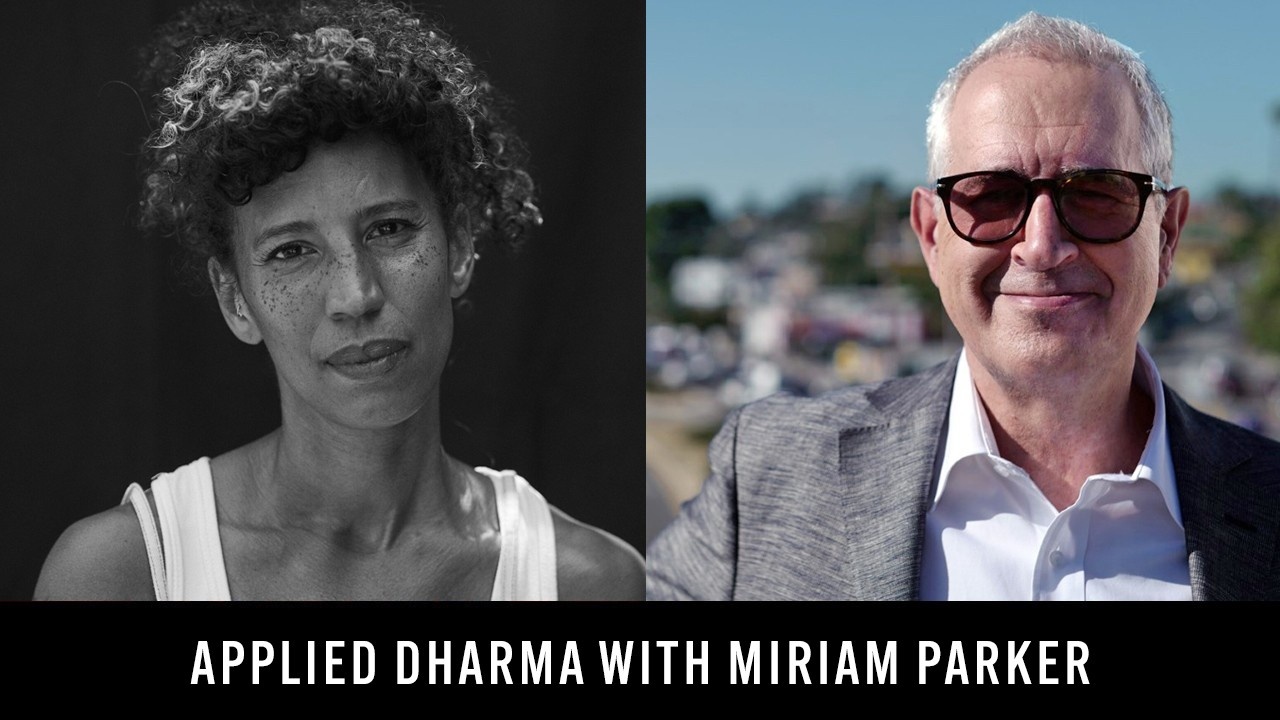EPISODE 36 – Applied Dharma with Miriam Parker

This week on Creativity, Spirituality & Making a Buck, David and Miriam have a vulnerable conversation about the nature of practice and how to apply it in our creative lives.
Miriam Parker is an interdisciplinary artist who uses movement, paint, video art, and sculpture/installation. Her work has been influenced by her experience as a dancer, her study of Buddhism and phenomenology, and her connection to the free jazz tradition. Over the last 4 years, her personal practice has led her to complete over 35 weeks of solitary spiritual retreat. Miriam also completed a rigorous study of the 15 Foundational Buddhist Courses as offered through the Asian Classic Institute, which parallels the basic core of information that a Geshe (Doctor of Theology) learns at a Tibetan Buddhist monastery. Miriam has been teaching meditation in NYC studios, non-profit organizations, and corporate settings for nearly 10 years. She has been imparting yogic techniques and physical trainings, both individually and in group settings, for nearly 7 years. To learn about Miriam’s upcoming events check out The Prana Life.
Taking Refuge
A refuge is a place one goes for protection. What if we did not have to physically go anywhere to have refuge and instead could find it within our minds? The Buddha’s mind had the capacity to be vast, loving, and spacious. Miriam says that our minds, too, have this capacity. Being in a state of spaciousness and loving awareness can offer us refuge. If you are struggling to find refuge from a difficult situation, try thinking about what the Buddha would do. This will give you a reference point for the spaciousness that already exists within if we only remember.
An Object of Virtue (19:40)
David and Miriam discuss the Buddhist practice of shamata, more commonly known as mindfulness meditation. One critique that people have of mindfulness meditation is that it can easily lead to a trance-like state. If you want to stay more grounded in your practice, Miriam suggests using an object of virtue. By this, she means focusing your attention on an object or person that represents virtue to you. Miriam likes to use a guru or teacher because they are typically the main reason why or how we have entered into a certain practice.
“The cause that allows you to be still is also the serving of a teacher or serving of a being that has the capacity to touch more than you’re able to touch.” – Miriam Parker
Joining Heaven and Earth (37:35)
Miriam describes how dance is a transcendental experience for her. Often, creative practices can be extremely spiritual. David describes executing a creative project as the connection between heaven and earth. When we do something creative such as dancing or playing music, it is almost like we are a vehicle or portal. We can embody this creative energy that is otherworldly and bring it into reality. Similarly, when meditating something often comes through such as a realization or type of spiritual message.
The Arts and Livelihood (51:27)
Finding ways to “make a buck” while living out your creative dreams can be a challenge. However, when you surrender to the dharma and apply it by diving into your passion, sometimes things just work out. Miriam describes how she came into her livelihood as a dancer. After doing classical training she devoted her life to her creativity and practice. She helped struggling nonprofits and eventually had these favors returned to her in the form of labor help. Miriam and David discuss the ways in which the pandemic helped many of us realize we needed a professional change. It was almost like a great purge because people were forced into stillness and able to then reevaluate what has meaning and their creative lives.
“You’re taking that understanding the best you have of how to get out of suffering and do your best to bring everybody with you and applying that mind to your vocation (of dance, or culinary art, or whatever it is) and using it. Actually applied dharma. That’s my new thing, like let’s not learn dharma let’s apply it right now.” – Miriam Parker

